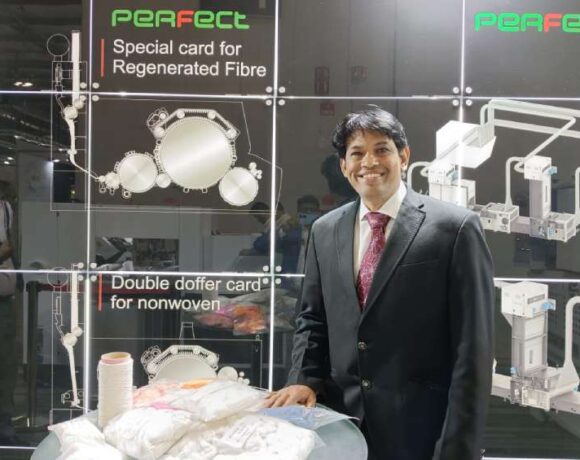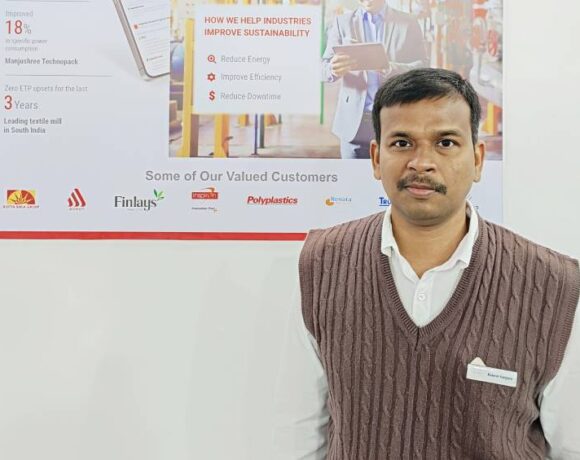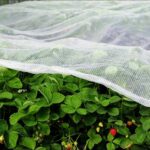‘The Future Of The Cotton Industry Is Bright!’

India is very close to becoming a net importer of cotton and it’s high time for the Indian textile industry to have higher per hectare yield of lint for which we are in need of immediate seed upgradation, says Aditya Agrawal, Director, Shivkrupa Cotspin Pvt. Ltd.
What motivated the recent expansion into cotton yarn manufacturing and what milestones have you achieved in this endeavour?
The good amount of customer base and the inability to cater to the quantity needs for qualitative yarn of domestic as well as overseas buyers always motivated us to expand. Huge availability of good quality raw material has always been our strength. We were making continuous efforts to escalate the production capacities in both the carded and combed counts of 100% cotton yarn. Expanding capacity leads to economies of scale, which reduces per unit production cost, making the business more competitive in terms of pricing. Expanding capacity can enable vertical integration as we could escalate the production to more than 7 lakh kgs per month from existing capacity of 2.5 lakh kgs a month. I would humbly state that we could position ourselves among the top-notch quality yarn suppliers for carded yarns in some of the domestic markets of Maharashtra. Also, we achieved good share of exports in our overall production over the years. We exported 48% of our manufactured cotton yarn in 2021-22.
Could you elaborate on the role of digitalization in your business operations and how it has helped Shivkrupa Cotspin remain competitive?
Digitalization should be an integral part of any industry in current times. Digitalization is a lifeline which is required for each breath of the business. Digitalization facilitates all the commercial, technical and administrative activities of our business. It helps in smooth operation of finances, banking, logistics, raw material procurement, finished goods sales, inventory management, spare parts management, etc. This leads to increased efficiency, reduced manual errors and faster execution of tasks. For example, automated inventory management systems ensure timely restocking, minimizing stockouts and overstocking. Importantly, digital tools enable businesses to monitor competitors, track industry trends and gather market intelligence.
In a competitive industry with both organized and unorganized players, what criteria do you look for in potential buyers or partners?
Financial stability, reputation, track record, ethical integrity, market access, values, operation in compliance with relevant laws, supply chain facility/logistics support, technology/digitalization, transparency, etc. These are the criteria we always look for in the potential partners/buyers.
How do you see the future of the cotton industry and what trends or innovations are you keeping an eye on?
The future of the cotton industry really seems to be bright. There are many opportunities ahead. India is very close to becoming a net importer of cotton and it’s high time for the Indian textile industry to have higher per hectare yield of lint for which we are in need of immediate seed upgradation. Today, we are lacking as compared to other major cotton growing countries due to very old seeds. Indian cotton lint yield per hectare is only about 400-500 kgs, while there are countries like China and Brazil which are taking more than three times yield of lint per hectare than us. This is because of huge difference of more than five times in plant population per hectare as well. Revolutionary changes like automatic picking, machine harvesting, higher yield, etc. will take time, but these are definitely on the cards and need of the hour. These things will usher in overall improvement as the experts of industry say and I do agree with the positive outlook and future for the textile industry in India. The future of the cotton industry is closely tied to sustainability as well. Consumers these days are conscious of environmental impact, hence sustainable farming practices, recycling, organic cotton and initiatives like the Better Cotton Initiative (BCI) are gaining attention. Research into genetically modified cotton and its implementation is crucial as it can lead to high-yielding cotton crops. Another factor is traceability — the renowned consumers and brands are interested in knowing the origin of their products these days. Adapting to these changes can help companies position themselves competitively and navigate the evolving landscape of the cotton industry.
What are your long-term goals and aspirations for Shivkrupa Cotspin in the next 5-10 years?
Our long-term goals and aspirations are:
- Increasing and diversifying the production capacity and taking the unit to over 50,000 spindles.
- Adopting advanced technologies to enhance production efficiency, quality and sustainability.
- Striving for internationally recognized quality certifications to build trust and credibility among customers.
- Market expansion.
- Vertical integration.
- Human resource development and CSR.
Considering the evolving nature of the textile industry and external market influences, regularly reviewing and adjusting these goals based on performance and changing circumstances will be essential for sustained success.
Can you share your experience working with The Yarn Bazaar and how did TYB’s support impact your entry into the Ichalkaranji market and the handling of logistics?
My yarn was initially introduced in the Ichalkaranji market through The Yarn Bazaar (TYB). I already had a good market share and was aggressively working in the Malegaon market. When I began with the carded counts, my focus was solely on Malegaon. However, I was also searching for reliable suppliers to expand into the Ichalkaranji market. That’s when The Yarn Bazaar in the early stages of the company, came into the picture. TYB played a pivotal role in helping us enter the Ichalkaranji market, particularly with 30s combed weaving. The introduction of my combed weaving count in the domestic market was made possible through TYB.
In the Ichalkaranji market, some buyers hesitated due to unfamiliarity with the supreme quality of our yarns. TYB stepped in and facilitated the transaction with advance payment, demonstrating their confidence in our product. They also provided crucial support in arranging transportation. It’s common for buyers to book orders and expect suppliers to manage logistics, which can lead to delays in lifting and payment. TYB’s assistance in arranging vehicles on time was immensely valuable. While many traders focus only on negotiations, TYB’s support extended throughout the execution of orders which, as a miller, I found greatly relieving.
Shivkrupa Cotspin: Cotton Yarn Expansion
Shivkrupa Cotspin, with over 25 years in the cotton ginning and pressing industry, has become a noteworthy player in textile manufacturing. The company is now expanding into cotton yarn production, equipped with top-notch technology, including Uster Technologies machinery for quality checks.
Shivkrupa Cotspin’s focus on structured operations and digitalization sets it apart in an industry comprising of organized and unorganized players. This family-owned business has recently made significant strides in cotton yarn manufacturing.
The company aims to diversify its product offerings further into the weaving and garment sectors. It boasts world-class equipment from Uster Technologies including a high-volume instrument testing machine for raw cotton and state-of-the-art machinery for quality checks on cotton yarns.














